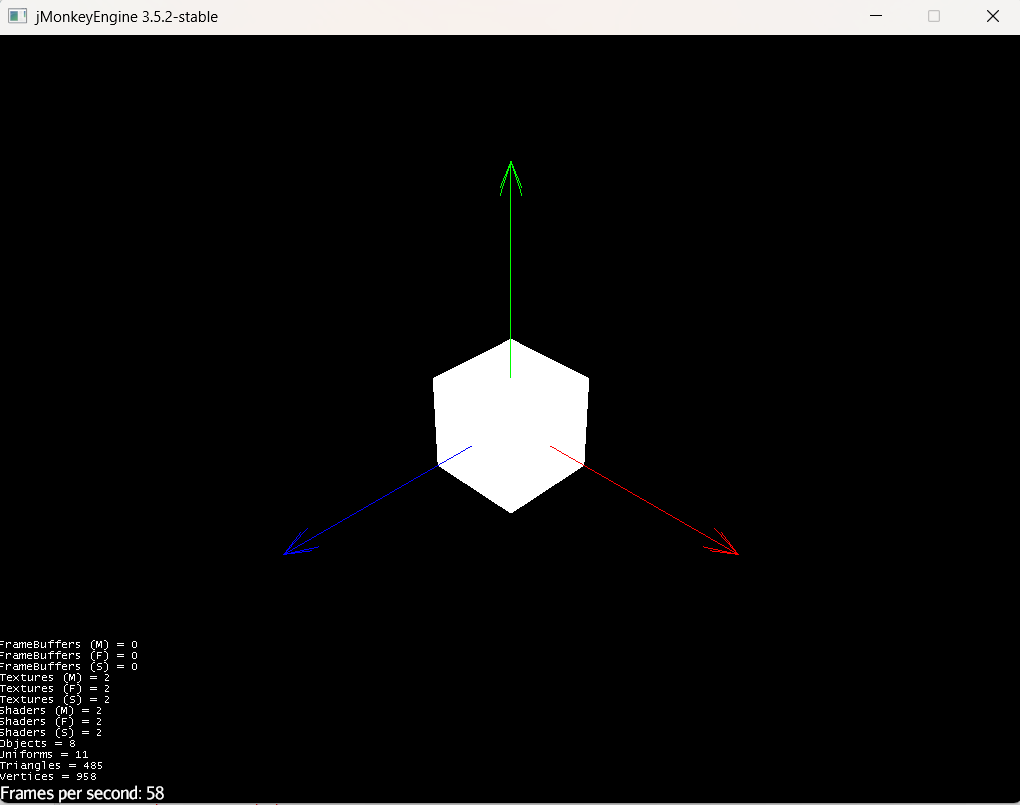I am not understanding parallel projection.
I have this test code:
package jme3;
import com.jme3.app.SimpleApplication;
import com.jme3.material.Material;
import com.jme3.math.ColorRGBA;
import com.jme3.math.FastMath;
import com.jme3.math.Quaternion;
import com.jme3.math.Vector3f;
import com.jme3.scene.Geometry;
import com.jme3.scene.Mesh;
import com.jme3.scene.debug.Arrow;
import com.jme3.scene.shape.Box;
public class CameraTest extends SimpleApplication {
@Override
public void simpleInitApp() {
Mesh m = new Arrow(Vector3f.UNIT_X);
Geometry geom = new Geometry("X",m);
geom.scale(5);
Material mat = new Material(assetManager,"Common/MatDefs/Misc/Unshaded.j3md");
mat.setColor("Color", ColorRGBA.Red);
geom.setMaterial(mat);
rootNode.attachChild(geom);
m = new Arrow(Vector3f.UNIT_Y);
geom = new Geometry("Y",m);
geom.scale(5);
mat = new Material(assetManager,"Common/MatDefs/Misc/Unshaded.j3md");
mat.setColor("Color", ColorRGBA.Green);
geom.setMaterial(mat);
rootNode.attachChild(geom);
m = new Arrow(Vector3f.UNIT_Z);
geom = new Geometry("Z",m);
geom.scale(5);
mat = new Material(assetManager,"Common/MatDefs/Misc/Unshaded.j3md");
mat.setColor("Color", ColorRGBA.Blue);
geom.setMaterial(mat);
rootNode.attachChild(geom);
m = new Box(1, 1, 1);
geom = new Geometry("Box", m);
mat = new Material(assetManager,"Common/MatDefs/Misc/Unshaded.j3md");
ColorRGBA bgColor = ColorRGBA.White;
mat.setColor("Color", bgColor);
geom.setMaterial(mat);
rootNode.attachChild(geom);
cam.setLocation(new Vector3f(10,10,10));
Quaternion rotation = new Quaternion().fromAngleAxis(45*FastMath.DEG_TO_RAD,Vector3f.UNIT_Y);
cam.setRotation(cam.getRotation().mult(rotation));
rotation = new Quaternion().fromAngleAxis(35*FastMath.DEG_TO_RAD,Vector3f.UNIT_X);
cam.setRotation(cam.getRotation().mult(rotation));
cam.setParallelProjection(true);
}
public static void main(String[] args) {
CameraTest app = new CameraTest();
app.start();
}
}
If I comment out the call to setParallelProjection, I get what I expect:
But, if I call the setParallelProjection, I get an all white screen which seems to be the box has completely filled the screen. I can turn the camera and see the edges of the box, but can’t move to where I can see the whole thing.
I must be misunderstanding what this does. Can someone please give me some insights?
